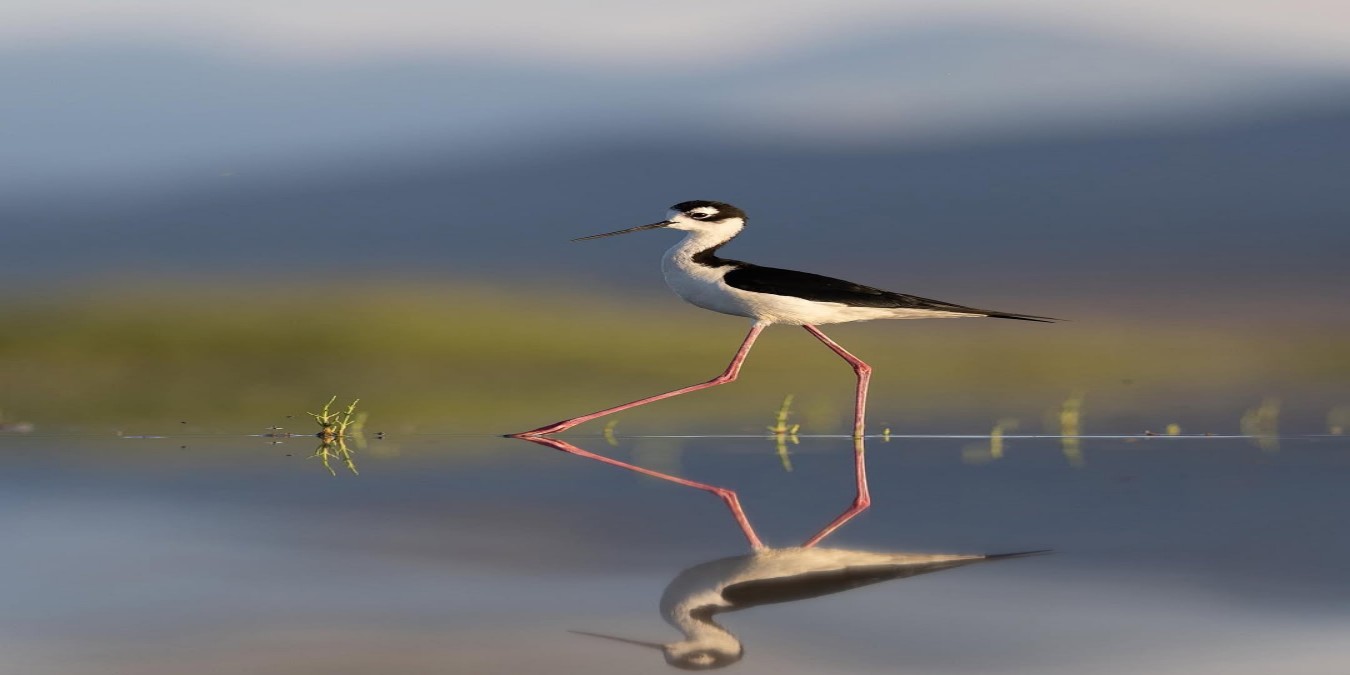Slim, graceful, and impossibly delicate, the Black-necked Stilt moves through Tobago’s wetlands like a line of poetry brought to life. Rarely seen on the island, it appears as if conjured from the stillness, a flash of white and jet-black balanced on legs so long and pink they seem to belong to another world.
Where the mangroves breathe and the marshes mirror the sky, this wader steps lightly across the mudflats, each motion precise, each pause deliberate. Its slender bill traces the soft earth, searching for tiny molluscs and hidden insects as though reading a script written in the mud.
In small, restless flocks, stilts drift across the shallows, their sharp, nasal “peent!” ringing out like a quick spark of sound in the quiet air. When they rise, their long legs trail behind them like strokes of watercolour across the horizon, birds painted by contrast, defined by elegance.
Though common in Trinidad, here in Tobago, the stilt is a rare visitor, a passing whisper from the continent. Those who see it witness a moment of wild, fragile beauty, a reminder that the island still holds secrets for the patient observer.
Their nests, simple and hidden among mangrove roots, blend so completely into the earth that even the olive-speckled eggs seem sculpted from shadow. Disturb them, and the parent bird becomes an actor of distraction, calling, fluttering, feigning injury with a dramatic flourish meant to protect the unseen life at its feet.
The Black-necked Stilt is more than a bird; it is a dancer of the wetlands, a fleeting gift from the mudflats and tides, a hint of wild grace moving through Tobago’s quiet places, where water, wind, and wings meet.


Comments